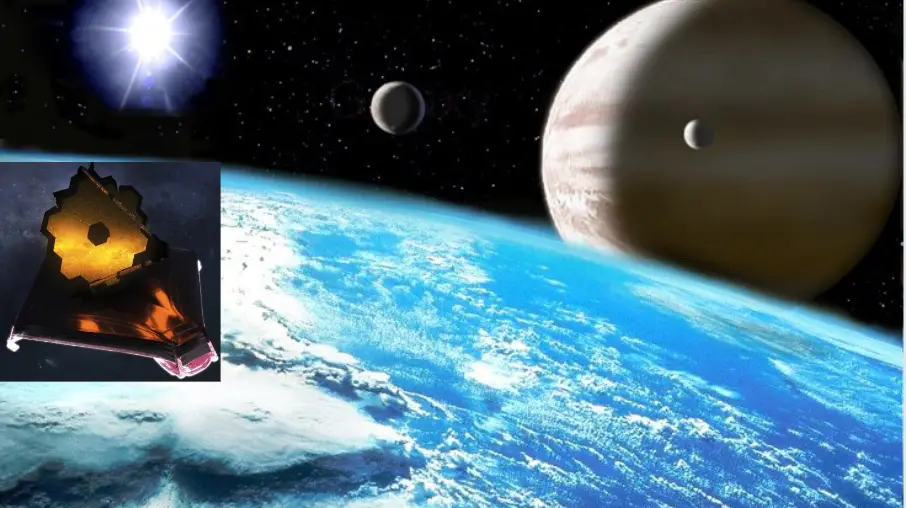Kevin Costner’s Water World did poorly at the box office, grossing just $80 million on a budget of $172 million. The film went on to become a cult classic, and even though it depicted an Earth completely submerged in water, there are a handful of exoplanets with this same characteristic scattered throughout the universe. We’ve known about their existence for the past 20 years, but with the jaw-dropping discovery of exoplanets with this characteristic, it’s Charles Cado, a PhD student at the University of Montreal and a member of the Institute for Research on Exoplanets, or IREX, has led a team of international researchers in the discovery of the exoplanet Toi 1452b, which orbits one of two small stars in its system approximately 100 light years from Earth.
Toi 1452b is larger in size and mass than Earth and is located at a distance from its star where liquid water could exist on its surface. Renee Renee, University de Montreal professor and director of irex of the observatory Dumont megantic, or omm, said, “I’m extremely proud of this discovery because it demonstrates the high caliber of our researchers and instrumentation.” It was thanks to the omm, a special instrument designed in our labs called Spiro, and an innovative analytic method developed by our research team that we were able to detect this one-of-a-kind exoplanet. Kado used a camera created by the University of Montreal called pesto. Doctoral Candidate Francois René La Chapelle and Professor David Lafrenier The OMNI played a crucial role in confirming the nature of this signal and estimating the planet’s radius. This was no routine check; we had to make sure the signal detected by the test was caused by an exoplanet circling Toi 1452, the largest of the two stars in that binary system. As previously mentioned, T1452b resides in a binary star system, which means the system contains two stars. Later observations by a Japanese team to determine the planet’s mass confirmed this.
The researchers then observed the system with the instrument Spiro, which was installed in Canada. France The Hawaii telescope in Hawaii Spiro is an optimized near-infrared spectrophilera meter for high-precision radio velocity measurements. Sparrow was primarily designed in Canada and is best for studying low-mass stars like Toi 1452 because it operates in the infrared spectrum where these stars are the brightest. However, it took over 50 hours of observation to determine the planet’s mass, which is believed to be nearly five times that of Earth. Researchers Etienne Artigao and Neil Cook from irex at the University of Montreal played a significant role in determining the data. Ardugo explained that the line-by-line method enables us to clean the Sphero data of many parasite signals and to reveal the faint signature of planets, such as the one discovered by our team. The team also includes Papa John Dare and Thomas Vandal. Vandal worked on analyzing the Spiro data while two PhD students at the University of Montreal analyzed the host star’s composition, which helps determine the planet’s internal structure. The exoplanet Toi 1452b is likely rocky like Earth, but its size, mass, and density are very different from Earth’s. Earth is a very dry planet, even though it is sometimes referred to as the “Blue Planet” due to the fact that about 70 percent of its surface is covered by water. However, some exoplanets may have more water than we know. These worlds are known as ocean planets.
In addition, cadao explains Toi 1452b is one of the best candidates for an ocean planet that we have discovered to date. Its radius and mass indicate a significantly lower density than one would expect for a planet composed primarily of metal and rock like Earth. Michielo Plotnikov and Diana Valencia of the University of Toronto are experts in exoplanet interior molding. According to their analysis of TOI 1452b, water may account for up to 30% of its mass, a proportion comparable to that of some natural satellites in our solar system, such as Ganymede and Callisto, as well as Titans and Enceladus. Toi 1452b is an excellent candidate for additional observation with the James Webb Space Telescope. It is one of the few known planets with ocean planet-like characteristics, and it is close enough to Earth for scientists to hope to study its atmosphere and test this hypothesis. It is located in a region of the sky that can be observed year-round by a telescope, making observations easier.
Deion, who reviewed the conception of James Webb’s component nyrus, or near-infrared imager and slit-less spectrograph, stated that our observations with the web telescope will be crucial to gaining a deeper understanding. toi 1452b As soon as we can, we will book time on the web to observe this strange and wondrous world. Even if the calculations were wrong and Toi 1452b isn’t an ocean planet, it’s still a good target for study because its radius is between that of the super Earth and sub-Neptune planets. Planets in that range are so rare that they’ve been dubbed the “radius Gap,” and Toi 1452b is right in the middle of it. Is Toi 1452b an entirely water-based world, or is it similar to Earth? Can we find life on this planet, and what else will the JWST discover in this faraway world?
![]()
